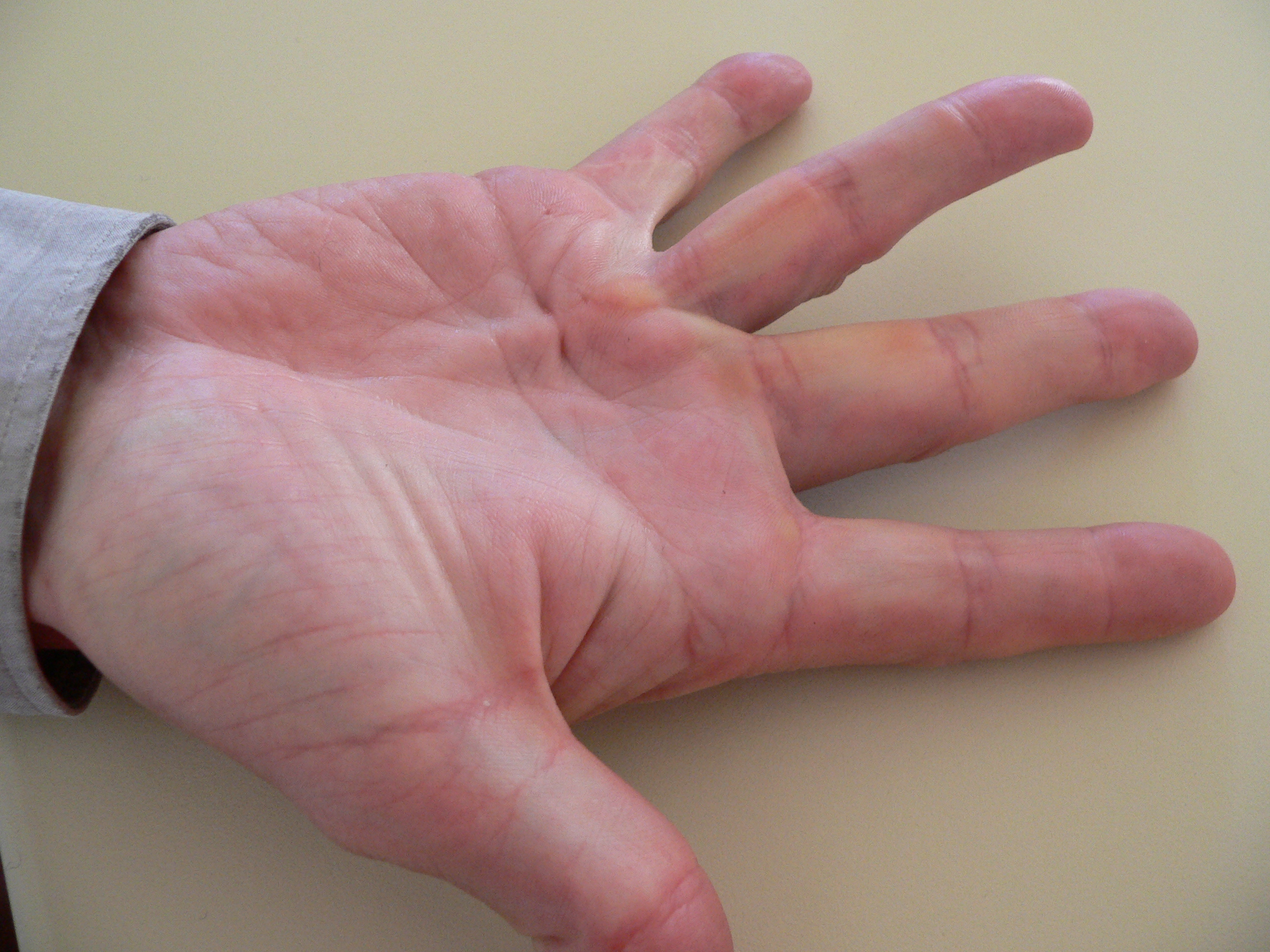Dupuytren’s Disease:Symptoms, Causes, Treatment
What are the symptoms of Dupuytren’s disease?
Dupuytren’s disease is a condition that affects the connective tissue in the palm of the hand. It is characterized by the gradual thickening and tightening of the tissue, which can cause the fingers to bend inward toward the palm. Symptoms of Dupuytren’s disease may include:
- Nodule Formation: The first sign of Dupuytren’s disease is often the development of small nodules or lumps in the palm of the hand, typically near the base of the fingers.
- Cord Formation: Over time, the nodules can progress to form thickened cords of tissue that extend from the palm into the fingers. These cords can cause the fingers to bend inward, known as contracture.
- Finger Contracture: Contracture of the fingers is a hallmark symptom of Dupuytren’s disease. The affected fingers may be unable to fully straighten, and the condition can progress to the point where the fingers are permanently bent toward the palm.
- Painlessness: In many cases, Dupuytren’s disease is painless, especially in the early stages. However, some individuals may experience discomfort or tenderness in the affected area.
- Progression: Dupuytren’s disease is typically a slowly progressive condition. The rate of progression can vary widely among individuals, and some may experience rapid progression while others may have a more gradual course.
- Affects Specific Fingers: Dupuytren’s disease most commonly affects the ring and little fingers, although it can also affect other fingers to varying degrees.
- Bilateral Involvement: Dupuytren’s disease can occur in one or both hands, and it may not affect both hands equally.
It’s important to note that not everyone with Dupuytren’s disease will experience all of these symptoms, and the severity of symptoms can vary. Treatment options for Dupuytren’s disease depend on the severity of symptoms and may include watchful waiting, injections, or surgery in more advanced cases. You will need to consult your healthcare provider for appropriate treatment.
What are the causes of Dupuytren’s disease?
The exact cause of Dupuytren’s disease is not fully understood, but it is believed to be a combination of genetic and environmental factors. Some of the factors that may contribute to the development of Dupuytren’s disease include:
- Genetics: Dupuytren’s disease tends to run in families, suggesting a genetic predisposition. Several genes have been implicated in the development of the condition.
- Age: Dupuytren’s disease is more common in older adults, with the highest prevalence occurring in individuals over the age of 50.
- Gender: Men are more likely to develop Dupuytren’s disease than women, and men tend to have more severe forms of the condition.
- Ancestry: Dupuytren’s disease is more common in people of Northern European descent, particularly those of Scandinavian, Celtic, or Northern European ancestry.
- Smoking: Smoking has been associated with an increased risk of developing Dupuytren’s disease and may contribute to its progression.
- Alcohol Consumption: Excessive alcohol consumption has also been linked to an increased risk of Dupuytren’s disease.
- Diabetes: Some studies have suggested that diabetes may be a risk factor for Dupuytren’s disease, although the relationship is not fully understood.
- Trauma or Injury: While not a direct cause, trauma or injury to the hand may trigger the development or progression of Dupuytren’s disease in some individuals.
It’s important to note that not everyone with risk factors for Dupuytren’s disease will develop the condition, and the exact role of these factors in the development of the disease is still being studied. Understanding the underlying causes of Dupuytren’s disease may help researchers develop more effective treatments in the future.
What is the treatment for Dupuytren’s disease?
The treatment for Dupuytren’s disease depends on the severity of the condition and the impact it has on hand function. Treatment options may include:
- Watchful Waiting: In mild cases where the symptoms are minimal and do not affect hand function, no treatment may be necessary. Regular monitoring may be recommended to track the progression of the disease.
- Needle Aponeurotomy: Also known as needle fasciotomy or percutaneous needle fasciotomy, this minimally invasive procedure involves using a needle to puncture and break the thickened cords of tissue in the palm. It can help improve finger extension in some cases.
- Collagenase Injection: Collagenase clostridium histolyticum (Xiaflex) is an injectable enzyme that can help break down the thickened cords of tissue in the palm. It is injected directly into the cords and may be followed by manipulation of the hand to break up the tissue further.
- Surgery: In more severe cases of Dupuytren’s disease, surgery may be recommended to remove the thickened cords of tissue. This procedure is known as a fasciectomy or fasciotomy. Surgery can help improve hand function and straighten the affected fingers, but it carries risks such as nerve damage and stiffness.
- Physical Therapy: After surgery or other treatments, physical therapy may be recommended to help improve hand strength, flexibility, and function.
- Splinting: Wearing a splint or brace on the affected hand can help maintain finger extension and prevent contracture in some cases.
- Radiation Therapy: In some cases, low-dose radiation therapy may be used to help slow the progression of Dupuytren’s disease and reduce the risk of recurrence after surgery.
The choice of treatment depends on various factors, including the severity of symptoms, the extent of contracture, and the patient’s overall health and preferences. A hand surgeon or specialist in hand disorders can help determine the most appropriate treatment plan for each individual.




